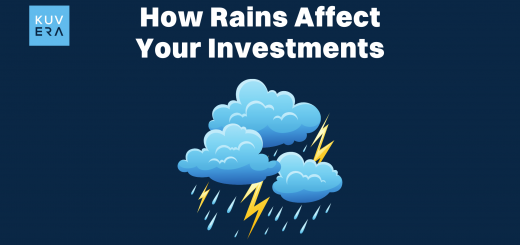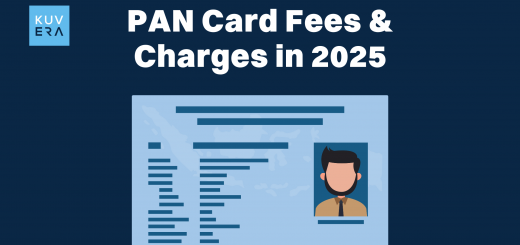Suppose interest rates on loans are rising, and you are in dire need of a home loan. You are unsure if taking a loan or using up your savings makes sense. What would you do? Read on to find out how interest rates impact your savings, the loans you plan to take and your outstanding loans.
Who defines interest rates?
Interest rates are defined by the government, primarily the central bank. In India, it’s the Reserve Bank of India (RBI). It sets the benchmark interest rates influencing borrowing costs and the country’s economic activity.
Commercial banks also set interest rates, for your savings account, home loan, education loan and personal loans. The RBI’s benchmark rates influence these interest rates. Governments and market forces influence interest rates through fiscal policies, though they do not directly set them. For example, the yield on government bonds is determined by market participants’ demand for these securities.
What are the interest rates that affect your savings and loans?
The rates that affect your savings and the outstanding loans are bank rate, repo rate, reverse repo rate, cash reserve ratio and statutory liquidity ratio.
What is a Bank Rate?
The Bank Rate is the rate at which a central bank lends money to commercial banks without any collateral. It is also known as the discount rate in the banking sector. The bank rate influences the rates that commercial banks charge their customers for loans. For example, if RBI increases the bank rate, interest rates for loans i.e., borrowing costs for commercial banks rise. This leads banks to increase the interest rates they charge customers.
What is Repo Rate and Reverse Repo Rate?
Repo is short for repurchase. It is that rate at which the RBI lends money to commercial banks using government securities as collateral. The central bank uses it to inject liquidity into the banking system. For instance, if the central bank wants to increase liquidity, it lowers the repo rate, making borrowing cheaper for banks.
On the other hand, the reverse repo rate is used as the rate at which RBI borrows money from commercial banks by offering them government securities as collateral. It is used to absorb excess liquidity from the banking system. For example, to reduce liquidity, RBI can raise the reverse repo rate. This would encourage commercial banks to park more funds with the central bank.
Let’s understand both the rates with two cases.
A commercial bank, suppose State Bank of India (SBI), needs funds to meet its short-term obligations. So, it decides to borrow money from the RBI. To secure this loan, SBI agrees to sell some of its government securities (like bonds) to RBI. It agrees to repurchase these securities at a later date for a higher price. This higher price includes the interest on the loan.
The interest rate at which the RBI lends money to SBI is the repo rate.
Similarly, when RBI wants to reduce excess money supply in the banking system, it uses the reverse repo rate. Suppose, the RBI decides to borrow money from a commercial bank. For that, it sells some of its government securities to the bank. It agrees to repurchase these securities at a later date for a higher price. This higher price includes the interest that the central bank will pay its loan back. This interest rate is the reverse repo rate.
What is CRR and SLR?
Cash Reserve Ratio (CRR) is the part of total deposits that a bank must keep in reserve as liquid cash with its central bank. If the RBI raises the CRR, banks have less money to lend, thus reducing liquidity in the market.
Statutory Liquidity Ratio (SLR) is the part a bank must maintain in the form of liquid assets like cash, gold or government securities. It is used to ensure the solvency and liquidity of banks. For instance, an increase in the SLR restricts the bank’s ability to inject more money into the economy by lending.
Imagine you run a business and have ₹10,000 in total sales. You need to keep some money aside to ensure you can continue to operate smoothly and meet any unexpected expenses. The RBI, like a manager, sets rules on how much money you need to keep aside. This is how CRR and SLR work.
What is MSF?
The Marginal Standing Facility (MSF) is a window for banks to borrow from RBI in an emergency when inter-bank liquidity dries up completely. Banks can borrow funds through MSF at a rate higher than the repo rate. Banks use this facility to meet short-term funding requirements and maintain liquidity.
How do interest rates work in the economy?
Interest rates are tools to manage the monetary policy of a country. They impact the borrowing, spending and inflation in an economy. Lower interest rates reduce the cost of borrowing, encouraging consumers to take home loans and car loans, thus increasing spending. Lower rates make borrowing cheaper for businesses which in turn encourages investment in projects, expansion and hiring. Thus, central banks adjust interest rates to control inflation. Similarly, higher rates tend to reduce spending and investment, which can help cool down an overheating economy and control inflation.
Another important kind of interest rates that impact our economy is exchange rates. They affect the value of a country’s currency. Higher interest rates offer better returns on investments denominated in that currency, thus increasing demand for it and potentially appreciating its value.
What causes interest rates to be higher?
Interest rates can be higher because of many reasons. Rising inflation rate leads central banks to increase interest rates to control price rises. Even an increase in government borrowing can drive up interest rates as the government competes for funds in the financial markets. Another way to increase the interest rates is by tightening monetary policy to curb inflation or cool an overheating economy.
What if the interest rates are low for a very long time?
If the interest rate are low for a very long time, it can have a prolonged effect on your savings and loans. Initially, low rates will increase borrowing and investment, boosting economic activity. Such periods of low rates can lead to asset bubbles in markets such as real estate and stocks, as cheap borrowing costs inflate asset prices.
This results in low returns on savings, which can discourage saving and negatively impact the people who rely on interest income. They also encourage excessive borrowing by individuals and businesses, leading to higher levels of debt that may become problematic when rates eventually rise.
Click here to know about Index funds.
Understanding interest rate trends can help you diversify your portfolio. In a low-rate interest rate case, increasing exposure to index funds can be beneficial. You can also time your investments based on interest rate cycles to maximize returns. For example, if you invest in index funds during the start of a low-interest-rate cycle, it can yield better returns as the market picks up.
Wish to know the returns on your mutual fund SIP investments? Here’s a smart way to plan your monthly plans. Click here.
How do interest rates impact your savings and loans?
When interest rates are high, savings accounts, fixed deposits, post office saving schemes and other deposits offer comparatively better returns. This encourages you to save more since you earn more on deposits.
Here’s an FD calculator.
Borrowing is more expensive in times of high interest rates. Loans for homes, cars, education and personal expenses come with higher interest costs, leading to higher monthly payments or EMIs. As loans become costlier, both individuals and businesses cut down on borrowing. This can lead to decreased spending, potentially slowing down economic growth.
Whereas, when interest rates are low, the returns on savings accounts, fixed deposits and other investments decrease. This can discourage you from saving, as the benefit of keeping money in the bank diminishes. So, people shift to other investments such as stocks or mutual funds.
When it comes to loans, lower interest rates make them more affordable. You can borrow money at lower costs, which reduces your monthly payments.
Therefore, there has to be a balance between savings and loans in the economy. Central banks adjust rates to control inflation and ensure economic stability. So, you need to consider interest rates when planning your finances. High-interest periods might be better for saving, while low-interest periods can be beneficial for borrowing.
Interested in how we think about the markets?
Read more: Zen And The Art Of Investing
Watch here: Understanding Index Funds
Start investing through a platform that brings goal planning and investing to your fingertips. Visit kuvera.in to discover Direct Plans and Fixed Deposits and start investing today.












